By Jeffrey A. Rendall, Images Courtesy of Nike Golf
BEAVERTON, OR – Mention the word “speed” in conjunction with most athletic endeavors, and you’re envisioning something positive. You can’t win a NASCAR race, catch a touchdown pass or strike out a batter on a high hard one without it.
But curiously enough, speed isn’t something you’d automatically associate with golf. That could change, however, with Nike’s latest offerings in the irons and golf ball categories, where speed is all the rage.
We’re talking specifically of the Nike VR_S forged irons, and the company’s 20XI (and 20XI X, ONE RZN and ONE RZN X) golf balls, the premium models in the 2013 line.
Tony Dabbs, Product Line Manager for golf clubs, elaborates on how the VR_S irons are an improvement on Nike’s previous versions: “The VR_S forged is the second generation high speed forged iron from Nike. The first version was the SQ Machspeed. The technology and materials were similar between the sets, but the shaping was radically different, especially on the short irons.”
In addition to the head shape, the VR_S’s face material was made to be as hot as possible for a forged club. Again, built for speed.
Another thing we noticed upon examining the VR_S was its wide sole and prominent cavity in back, very characteristic of game improvement-style cast clubs. In other words, it’s not what you would’ve seen with forged irons a couple decades ago.
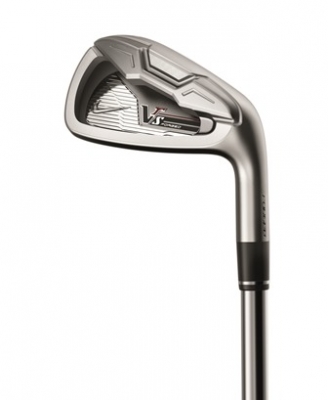 |
Is it possible to forge clubs with cast-type shapes?
Again, Dabbs explains: “Since this is a 2-piece iron, it allows us to use a very hot face which is lighter than normal, and then apply the saved weight to the sole. This lowers the center of gravity, making for an iron with high ball speed but also with enough weight positioned low to easily launch the ball in the air.”
For the player who wants a variety of irons models to choose from, Nike provides them:
According to Dabbs, Nike offers:
The VR_S Covert: A cast high-speed cavity back iron. Very appealing address position, easy to hit and long! VR_S Forged: Essentially a forged version of the Covert, from a performance perspective. This has everything the Covert iron offers with a different feel.
VR Pro Combo: Tour forged product with tour lofts. A little less forgiving than the VR_S line and very traditional lines. Still a cavity back.
VR Pro Blade: The tour blade.
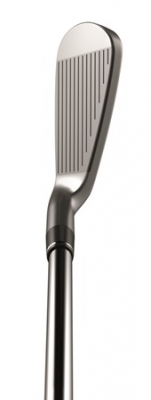 |
The last one being the club of choice for Tiger Woods, Rory McIlroy and most of the Nike Tour staff. Beautiful to look at, but you’d better be a good player to get the best out of them.
For those of us slightly below Tour level, the best way to find what’s right for you is to try them and compare.
Dabbs says evaluate the competition, too. “While we have tested our product against any and all competition, we know that our product stands up against anyone. We simply hope that consumers will try the product and experience it for themselves. For us to tell the golfer how good we are only goes so far. We want the golfer to make up their own mind and as long as he/she tries the product, we are confident we will win the majority of the time.”
To be fair, every manufacturer says something similar – you just can’t discover the difference until you’ve actually hit each club and can feel the contrast.
As for the VR_S forged irons, they’re designed for a mid-handicapper who wants distance help in a forged chassis -- but that doesn’t mean better players won’t like them. There are Tour players who want these things too, especially in the long irons.
We found the VR_S irons to be extremely easy to hit, with decent feel and better-than-average distance. Distance is certainly a trend these days, and that’s no fluke.
Dabbs agrees. “Just in the past 4-5 years you have seen a proliferation of “distance irons”. While some would say, “why do I need to hit my irons farther when I have 8-11 of them?” Our reply to that is simple…do you have a better success rate with a 6 iron or an 8 iron? If we can make an iron that is 2 clubs longer and you can hit it in place of a longer iron, then the player’s success rate is going to be better.”
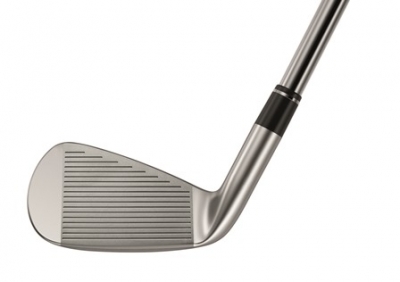 |
He continues, “While this notion is not terribly important for tour players -- as they can generate the velocity and hold an angle thru impact -- why shouldn't the average player enjoy a similar advantage without possessing the extreme talent of the best players in the world?”
Too true. We have no issue with the proliferation of distance irons, though it does look awful funny to see professionals hitting a 7-iron over 200 yards. But that also has to do with golf ball evolution, which we’ll address in the next section.
Being fairly new to the club-making business, some might think that Nike would lag behind in technology and performance – but from what we’ve seen and experienced, the company’s products are right up there with the best manufacturers in the business.
And all they ask is that you try them. We’d highly recommend that you do just that.
Nike Golf Balls for 2013 – 20XI, 20XI-X, ONE RZN and ONE RZN-X
Professional golfers certainly do amazing things with a golf ball. Seeing Tiger Woods capture the Player’s Championship with a wide assortment of shots and strategy was nothing short of spectacular, but how does all that technology translate to you and me?
Distance, for one.
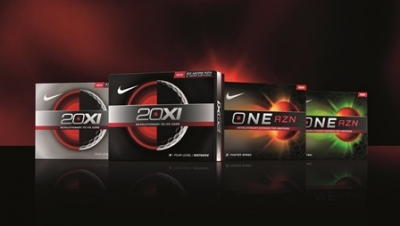 |
“We've taken our technology a step further by adding more RZN to the new 20XI ball. With more RZN material added to the core and mantle of the golf ball, our engineers have created an even faster engine for ultimate tour performance,” said Mark Alan, Nike’s Product Director for Golf Balls.
“This larger, softer RZN core improves feel off all shots while maintaining driver distance. The added RZN mantel produces longer shots off irons while providing a softer short game feel. This combination of core size and mantle translates into two times more RZN material than the previous generation 20XI,” Alan added.
For those wondering, RZN technology accomplishes two critical performance components to maximize benefits from a golf ball: More distance off the tee and a more stable ball flight (especially in crosswinds).
And we all know faster ball speed equals longer distance. Internal tests with Nike Golf Tour athletes have shown an average of 2-3 mph increase in ball speed (every 1 mph increase equates to 2-3 yards of carry distance).
Meanwhile, the ONE RZN is the latest edition to the RZN family, incorporating groundbreaking technology into a golf ball suitable for a wider range of players. ONE RZN features the same larger, softer RZN core found in the new Nike 20XI tour ball, but with a slightly different formulation.
This formulation is dialed and designed for increased distance when it counts. Nike's RZN core technology (found in the 20XI and ONE RZN ball lines) is a revolutionary step in providing a core material that is not only faster than the conventional rubber core, it's also lighter and more responsive resulting in longer, more stable ball flight.
As you work your way out from the core, mantle layers assist in optimizing spin rates off mid to short irons while the cover material can provide higher levels of durability, spin and feel around the greens.
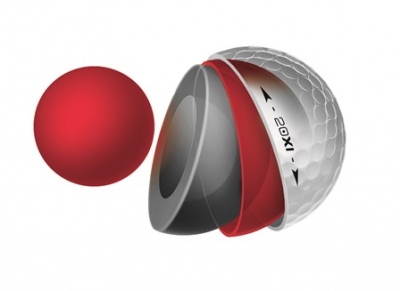 |
So those are the facts. The real question is what does it all mean? Which ball is best for you?
Alan lectures: “Typically softer compression golf balls will generate more distance off slower swing speeds as it allows the ball to compress more easily when less force is applied. Nike Golf's softest compression ball is the PD Women at a 54 ATTI compression and our firmest (which is still quite soft feeling) is the 20XI X at 86 ATTI.”
Like you might expect, lower swing speed players may not have the ability to fully compress a higher compression ball designed for higher swing speeds, and therefore may not fully maximize their distance potential.
But with higher swing speeds, some of what makes the best ball for your game in the short game is personal preference: “Some like the ball to stop quickly on the greens, some like the ball to check and release a controlled distance, while others prefer the ball to rollout. Players with a consistent short game will be more likely to experience the added benefits of greenside spin control. The Nike 20XI and 20XI X balls incorporate the softest urethane covers on the market for excellent control and feel,” Alan said.
We could actually see the most difference between the 20XI and ONE RZN models around the greens. Since it’s very hard to pit different balls against each other off tee shots (we simply do not have a large enough sample), we’d say the Nike balls all provided solid distance and control in the sense that there did not appear to be excessive side-spin.
But the 20XI balls were definitely the winners around the greens. Weekend players need a ball that’s going to stop quickly – at least we do. In that sense the 20XI balls were superior. Noticeably so.
Again, try the different brands and models for yourself – and if you’re watching, you’ll likely see the difference.
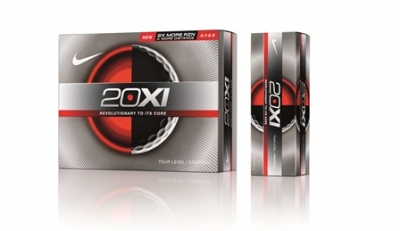 |
Nike’s products rated well in all categories, and we enjoyed trying them.
All in all, definitely satisfying our “need for speed” on the golf course.
Details:
Nike Golf’s VR_S Forged Irons and 20XI Golf Balls
Available at your higher-end golf retailers and club pro shops.
Check out more information about Nike Golf products at: www.nikegolf.com . Like you’d expect from Nike, the website puts on a good show, too.
| Related Links | Comments on this article? | |
|
Maryland National Golf Club Hollow Creek Golf Club Rocky Gap Resort PB Dye Golf Club in Ijamsville Whiskey Creek Golf Club |
E-mail Jeff Rendall, Editor: jrendall@golftheunitedstates.com |











